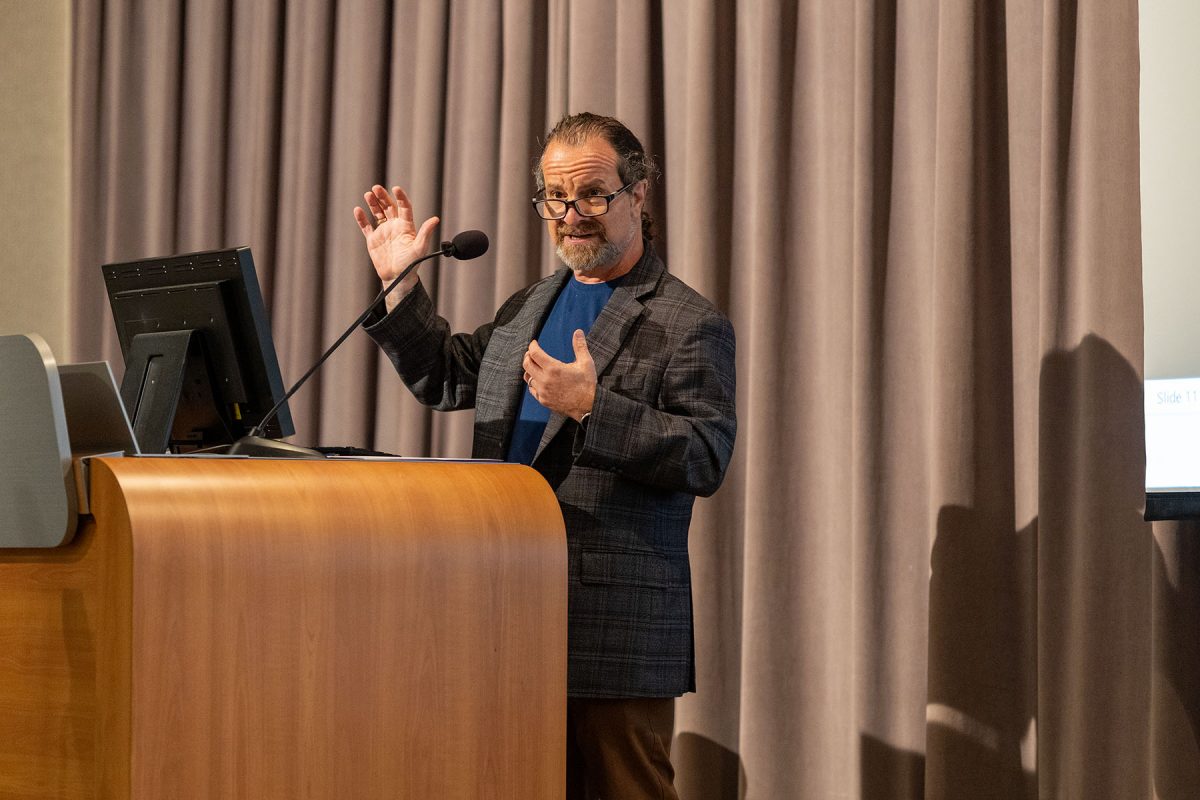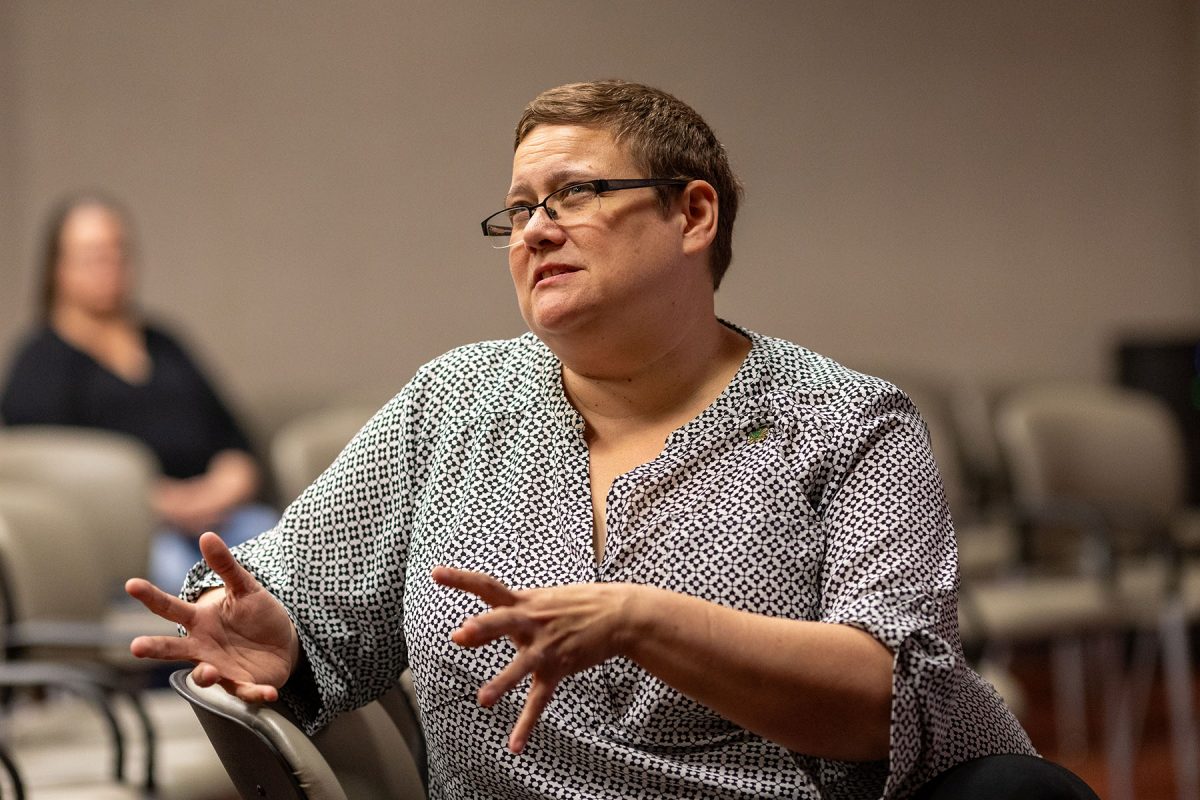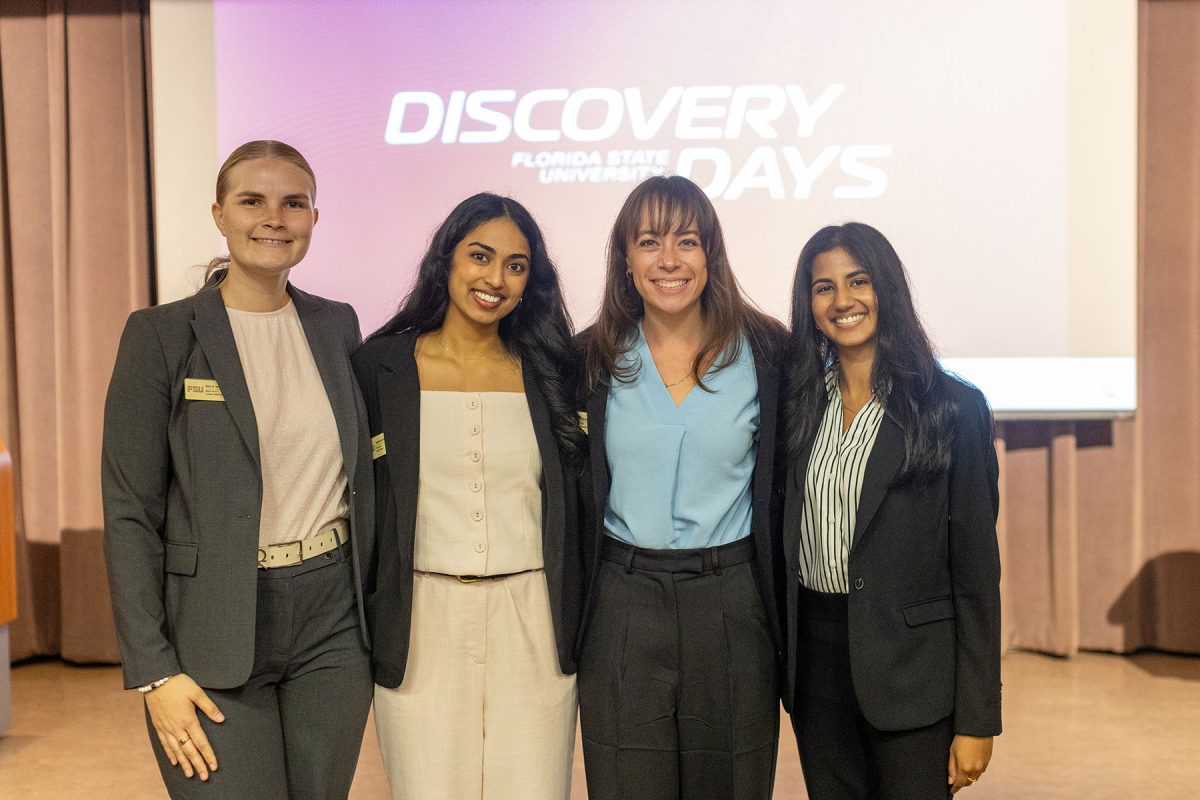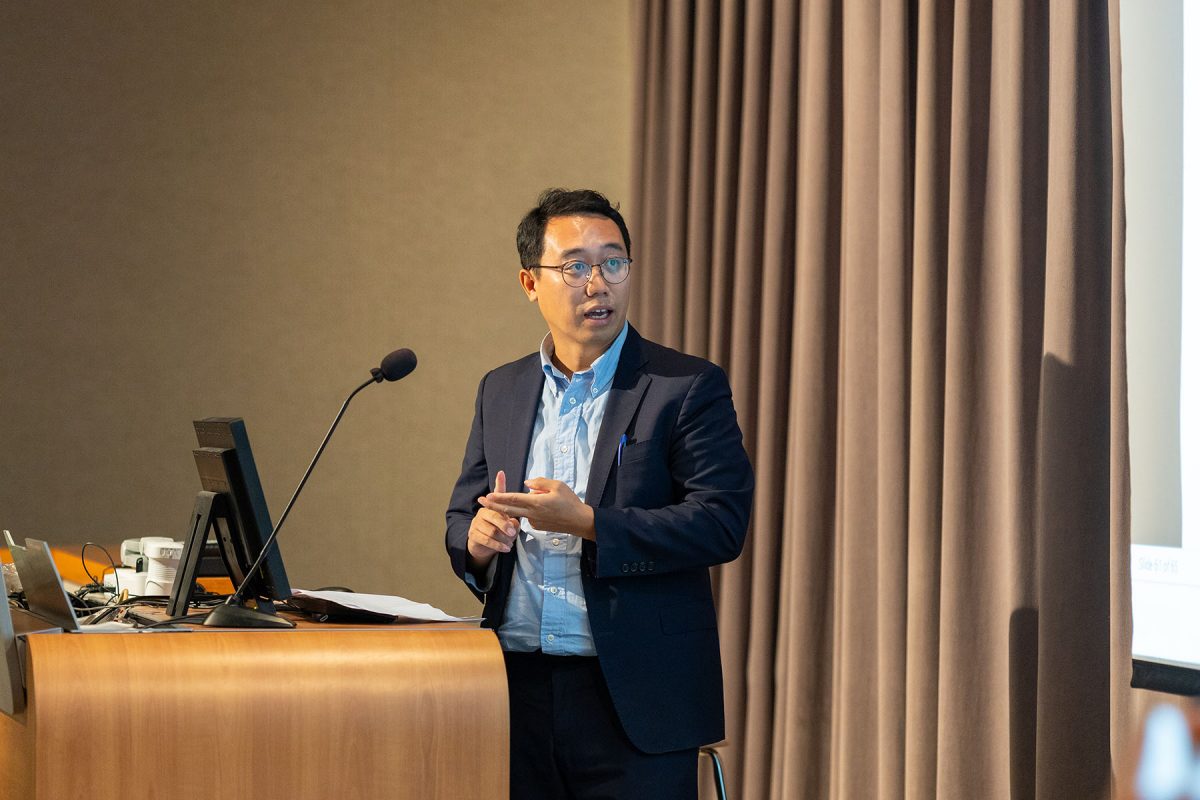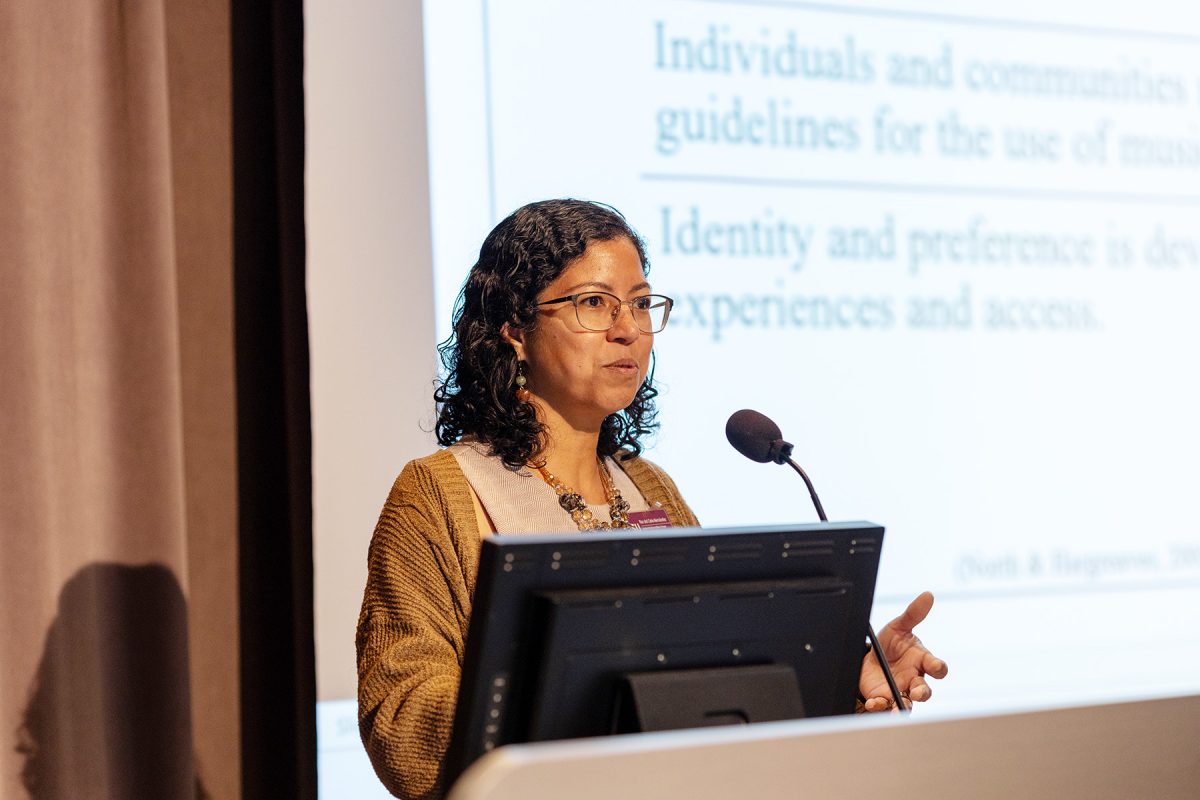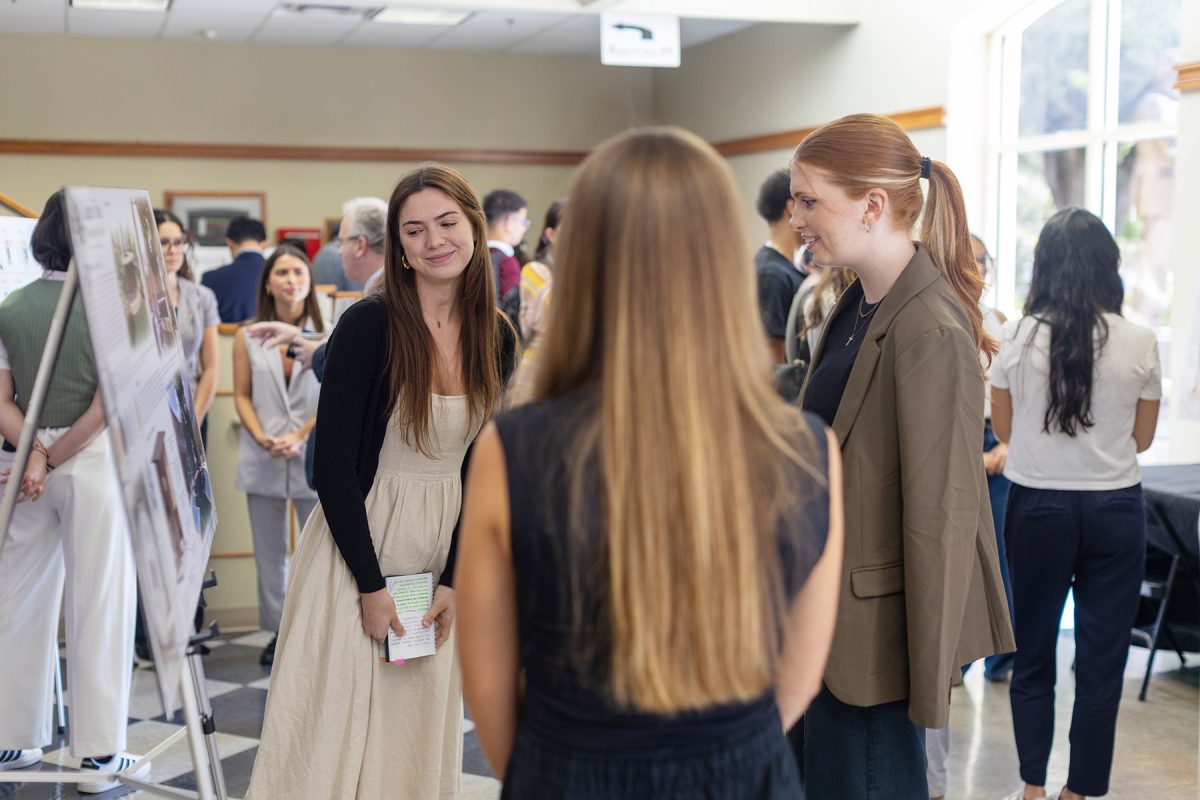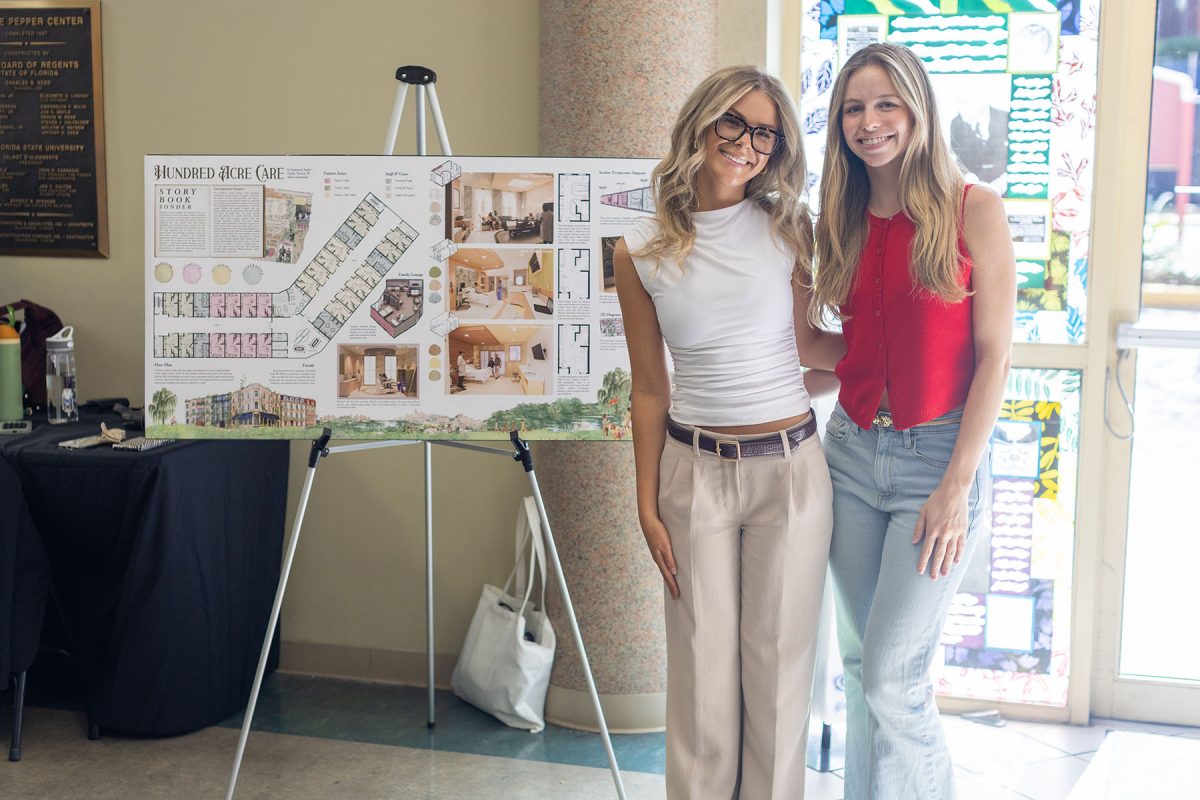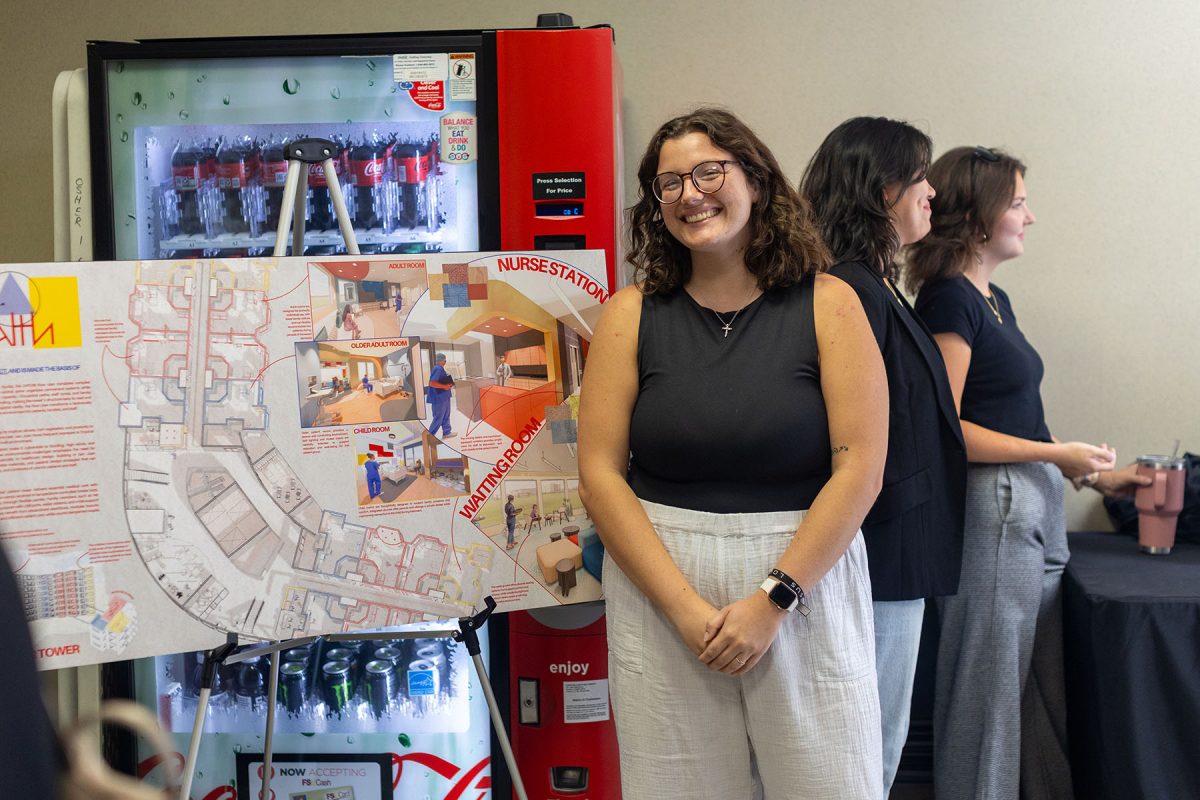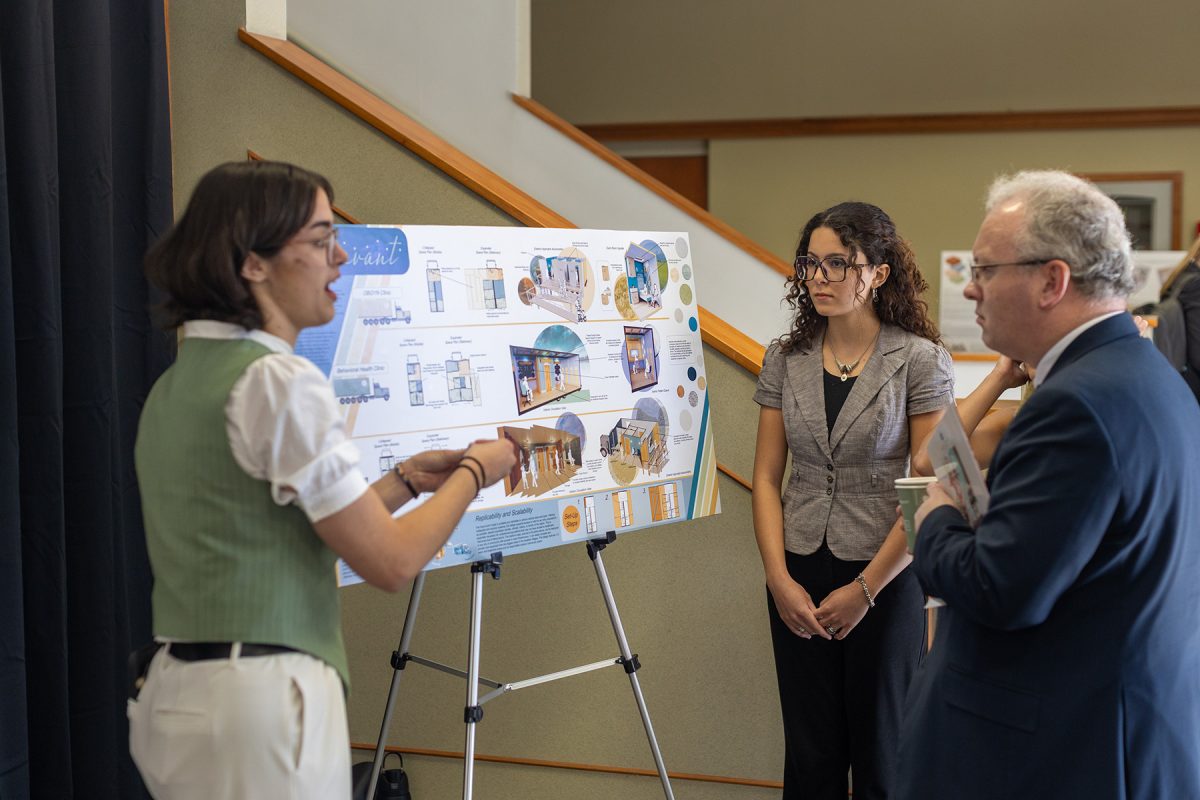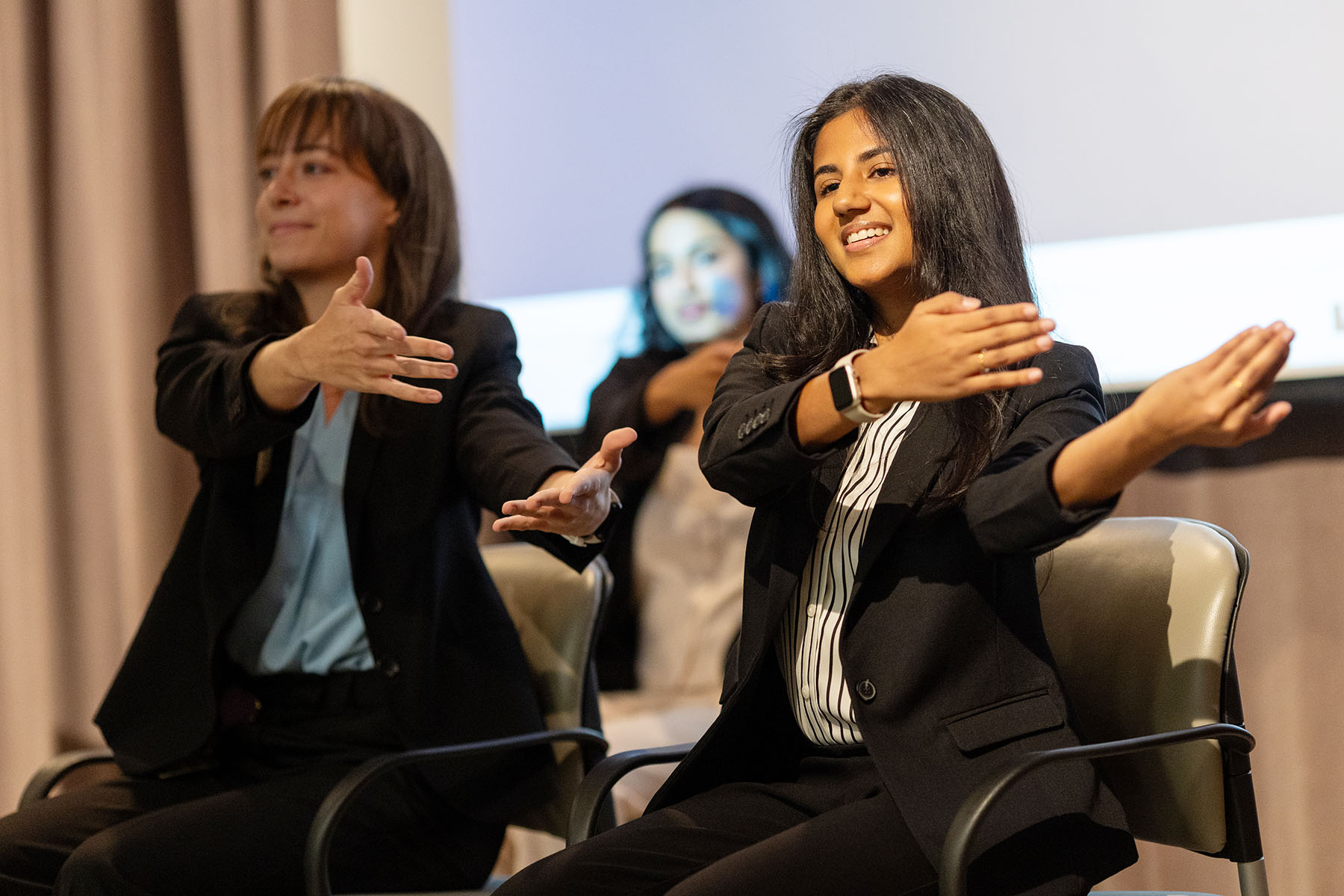
Florida State University's Claude Pepper Center recently served as a vibrant hub for creativity and collaboration, where faculty from multiple departments engaged with artists, designers and researchers to explore a central question: How can the arts and humanities improve health and well-being?
The Arts-Humanities-Health Symposium IV was one of several events during FSU Discovery Days - a weeklong celebration of research, creativity and innovation.
"Research in the arts and humanities at FSU is defined by the cutting-edge work of scholars and practitioners," said Iain Quinn, professor of organ in the College of Music and a Faculty Fellow in the Office of Research. "Our faculty and students participate in a global network that is continually engaged in innovation, critical thinking and a deeper understanding of the human condition."
Throughout the afternoon, presenters highlighted the role of dance, art, music and interior design in promoting health, improving working environments and enhancing lifestyles.
"There's a temptation to talk about the arts and sciences as two separate worlds, one expressive, the other analytical," said Todd Queen, dean of the College of Music. "This discussion invites us to challenge that divide and asks us to consider how creativity itself can be a form of care, and how therapeutic practice can be enhanced and outcomes can be improved through the arts."
Presentations covered a variety of topics, including dance practices for older adults and individuals with Parkinson's disease to promote activity, wellness and engagement; the role of music for healing, from ancient traditions to its application in modern medical settings; and approaches to health care design within interior design, focusing on the integration of aesthetics, functionality and patient-centered care.
Dave Gussak, director of the FSU Institute for the Arts and Art Therapy with the Imprisoned, shared insights and highlighted the transformative power of art in correctional environments.
"The arts allow people to be seen as one who creates, rather than this image of those who are inside that destroy," Gussak said. "It helps to recreate affirming identities and to fortify the most vulnerable, and it gives a voice to those who could not otherwise be heard. It creates empathy and emotional connection, a visual bridge between the inside and the outside."
Following the symposium, poster presentations showcased projects that explored how design can support healing environments in health care settings.
"Therapy in the arts is a growing practice that recognizes art making as a means of reflection, resilience and healing," Queen said. "From painting to movement, music and digital media, these forms of expression allow individuals and communities to process emotion, confront trauma and to heal through therapeutic interventions."

